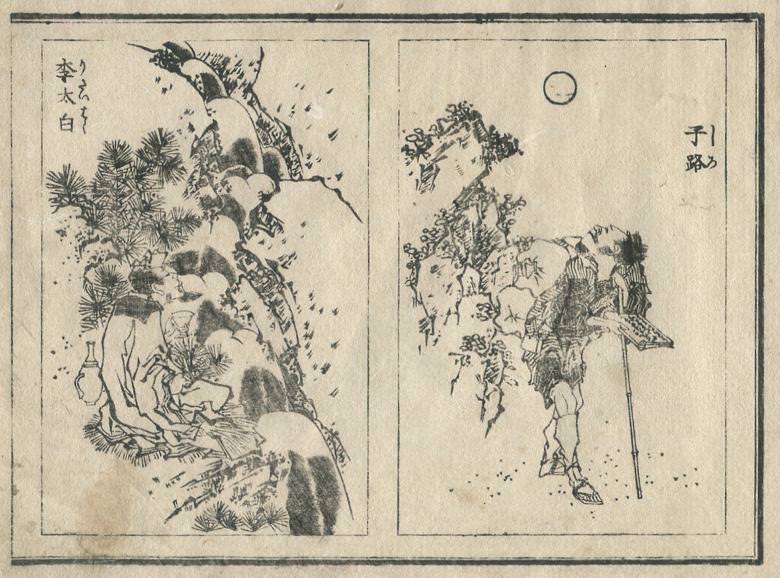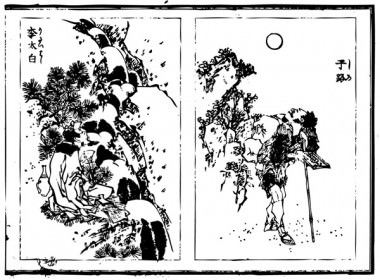“李太白(Ritaihaku)” and “子路(Shiro)” are drawn.
It may be more intelligible for “李太白(Ri-Taihaku)” to call it 李白(Rihaku).
By the poet of the Chinese Tang cost, it is called 詩仙李白 on a par with 詩聖杜甫.
With the picture, the side was sake bottle used, the kimono is put on it, and it is an impression like a wind.
Moreover, signs that the air is gazed at feel the breath of creation also for calm inside also so that they may be absorbed in meditation.
“子路(Siro)” is a scholar of the China years age and was studying under Confucius.
It may have appeared also into Confucius’s Analects and may be familiar also in Japan.
According to “群書類従”, there is an anecdote of having carried rice on the back to the supporting-parents sake, and having gone the way of 100 villages back and forth to it.
With a picture, it seems that it is expressed.
「李太白」「子路」が描かれています。「李太白」は李白という方が分かりやすいかもしれません。中国の唐代の詩人で、詩聖杜甫と並ぶ詩仙李白と呼ばれます。絵ではそばに酒瓶らしきものを置いており、飄々とした印象です。また、宙を見つめる様子は思索に耽るようでもあり、静謐な中にも創作の息吹を感じます。「子路」は中国春秋時代の学者で、孔子に師事していました。孔子の論語の中にも登場しており、日本でも馴染みがあるかもしれません。『群書類従』によると、父母を養うのために米を背負って百里の道を行き交ったという逸話があります。絵ではそれを現していると思われます。

